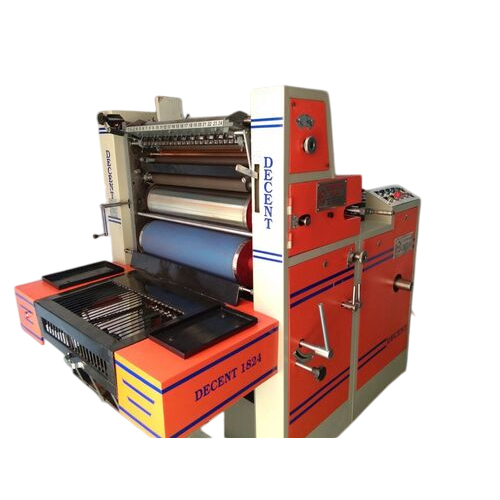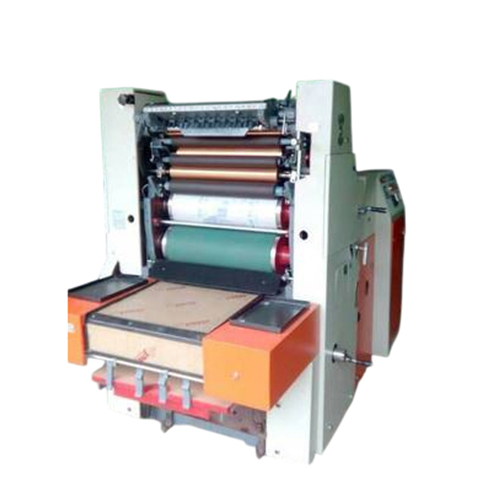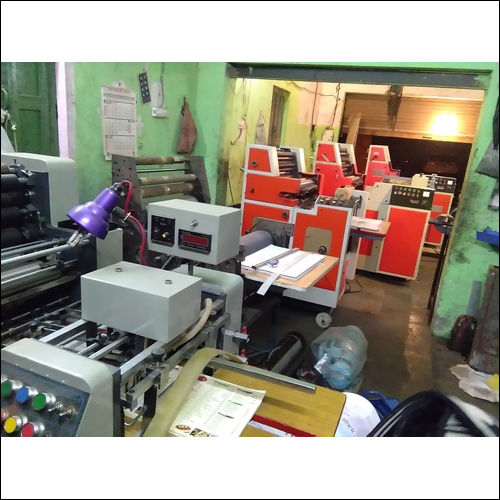Non Woven Printing Machine
Product Details:
- Type PRINTING MACHINE
- Material Mild Steel
- Computerized Yes
- Automatic Grade Semi-Automatic
- Plate Type Flatbed Printer
- Print Direction Uni-Directional
- Power 3 Horsepower (HP)
- Click to View more
Non Woven Printing Machine Price And Quantity
- 1 Unit
- 550000.00 INR/Unit
- 400000.00 - 750000.00 INR/Unit
Non Woven Printing Machine Product Specifications
- 16" X 22"
- Mild Steel
- Yes
- Flatbed Printer
- Semi-Automatic
- PRINTING MACHINE
- 3 Horsepower (HP)
- Uni-Directional
- 1480 Kilograms (kg)
Non Woven Printing Machine Trade Information
- 10 Unit Per Month
- 1 Week
- Wooden Boxes.
- Delhi All India
Product Description
Features of Non Woven Printing Machine:
- Optimum Quality
- Long Service Life
- Widely Demanded
- Low Maintenance
Model two offset set fed two in one printing machine model DPL mini solna type specialist printing machine (pipe) and front feeding Paper printing and Non-Women bag printing machine size 10x15 to 22x32 a level.
This machine heavy duty is Non-woman bag best printing and paper printing paper and Non woman bag one setting printing or No machine function changing Non-woman bag vacuum feeding molerise table automatic Impression on off. This machine includes all technical solution for easy operation and for increasing productivity. The machine is compact and solid built on a strong C.I. frame. It is reliable at any working speed. These machine is equipped with high grade hardened grounded gears for its smooth operation for year.
Technical Specification of Non Woven Printing Machine:
|
Description |
16" X 22" |
18" x 25" |
|
Paper Size Max. |
406 x 550 mm |
460 x 640 mm |
|
Paper Size Min. |
150 x 178 mm |
230 x 280 mm |
|
Printing Area |
390 x 545 mm |
445 x 635 mm |
|
Plate Size (0.42mm) |
435 x 558 mm |
510 x 665 mm |
|
Blanket Size (1.9mm) |
490 x 560 mm |
570 x 670 mm |
|
Stock Rang |
30 to 450 gsm |
30 to 450 gsm |
|
Pile Height Feeder |
350 mm |
800mm |
|
Pile Height Delivery |
Fix |
410 mm |
|
Gripper Margin |
9 mm |
9 mm |
|
Running Speed |
6000 / ph |
8000/ph |
|
Power Reqd. |
3 HP |
5 HP |
|
Height |
1450 mm |
1650 mm |
|
Floor Spaces |
1200 x 1750 mm |
1290 x 1935 mm |
|
Machine Weight |
1380 kgs |
2600 Kgs. |
FAQs of Non Woven Printing Machine:
How would I print on non woven?
4 Ways to print on Tissue and Non-Wovens
- Use water-based inks.
- Consider mechanized ink supply frameworks.
- Execute elite execution drying frameworks.
- Keep up with and care for your hardware.
What number of sorts of printing machines are there?
While there are a few different printing strategies accessible available today, there are 8 fundamental styles of presses that are being used today: Computerized (inkjet) Printers (Short to medium run) Screen Printers (Enormous volume) Flexographic Printing Machine (huge volume)
Which is better woven or nonwoven?
Nonwoven textures are lighter and more vulnerable than woven or sew textures. They don't have a lot of memory (for instance, in the event that you twist your elbow the texture will hold that position and leave a pucker in the texture) or washing toughness, making them unacceptable in strong dress applications.

Price:
- 50
- 100
- 200
- 250
- 500
- 1000+









 Send Inquiry
Send Inquiry Send SMS
Send SMS Call Me Free
Call Me Free English
English Spanish
Spanish French
French German
German Italian
Italian Chinese (Simplified)
Chinese (Simplified) Japanese
Japanese Korean
Korean Arabic
Arabic Portuguese
Portuguese